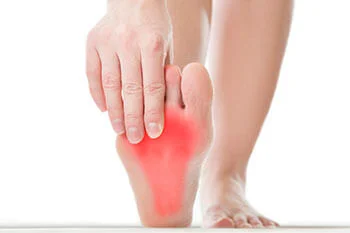Persistent Achilles tendon pain can be a debilitating condition. There are various types of Achilles tendon problems that are often grouped collectively into Achilles Tendinitis. However, it should be understood that not all Achilles tendon pain is tendinitis. It is generally accepted that individuals with persistent Achilles tendon pain are more prone to Achilles tendon rupture.
Several separate conditions commonly affect the Achilles tendon causing pain and inflammation.
- Achilles Tendinitis – Achilles tendinitis is when the Achilles tendon becomes inflamed, usually at the point of attachment at the back of the heel.
- Achilles Insertional Calcific Tendinitis – The Achilles is inflamed at the point of attachment at the back of the heel and a spur has formed from the constant pulling of the Achilles tendon on the heel bone. Sometimes there are additional calcifications within the tendon.
- Achilles Tendinosis – You may be wondering, “What is that knot on my Achilles tendon?” The Achilles is inflamed and there is thickening of the tendon. Sometimes there is a visible knot in the tendon. This usually results from scar tissue after a partial tear occurred. When aggravated it will be tender when the knot is squeezed.
Symptoms
The Achilles may have some of these associated findings:
- Tendon warmth
- Pain with activity and stretching
- Swelling of the tendon
- Tight calf muscle (common finding)
- Visible knot on tendon
- Lump that you can feel along tendon above heel
Diagnosis
X-rays are taken initially. If a spur is present, it will be identified on X-ray. An MRI may be obtained if there a partial tear is in question.
Non-Surgical Treatment
- Cast immobilization
- Heel lifts
- Change in shoe gear. An open back clog with a modest heel is ideal.
- Calf stretching
- Icing
- Anti-inflammatory medication
- Physical therapy referral
- Custom Orthotics
Surgical Treatment
When conservative treatment has not been successful, surgical treatment may be considered. If a tight calf muscle is present, this should be addressed in each of these conditions. A gastrocnemius recession is often recommended. Patients are usually non-weightbearing for four weeks following this procedure in isolation. If there is calcification within the tendon or a spur at the insertion of the Achilles tendon, then the tendon is partially detached in order to remove the spur or calcification. A strong suture anchor is placed in the back of the heel to reinforce the tendon. Six weeks of non-weightbearing is required in this situation.
For minor Achilles tendinosis that does not respond to conservative care, Radio-frequency Micro Tendon Ablation can be performed to increase blood flow to the diseased section of tendon. In cases of more extensive Achilles tendinosis the thickened part of the tendon may need to be removed and usually a nearby tendon, the flexor hallucis longus, is transferred for strength. The nearby muscle of the of this tendon also helps bring blood flow and healing potential to the area of unhealthy Achilles tendon. Usually, our Achilles tendon rupture protocol is initiated after this procedure.


